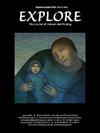Knowledge, attitude, perception and satisfaction level of Ayurveda and allopathy in India: A systematic literature review
IF 2.2
4区 医学
Q3 INTEGRATIVE & COMPLEMENTARY MEDICINE
引用次数: 0
Abstract
Objective
Ayurveda, an ancient Indian medical system, remains integral to India's healthcare despite the dominance of allopathy. The lack of scientific validation, standardized regulations, and clinical trials has hindered its integration into modern healthcare. The Ministry of AYUSH has played a key role in promoting Ayurveda, though regional disparities persist in its implementation. The COVID-19 pandemic revived interest in Ayurveda, highlighting its preventive aspects but also raising concerns about misinformation. A balanced, integrative approach combining Ayurveda and allopathy can enhance healthcare by leveraging the strengths of both systems. This study aimed to decipher the knowledge, attitude, perception, and satisfaction levels of Ayurveda and Allopathic, and/or integrative system of medicine, among the Indian Population.
Methods
The search for eligible studies for inclusion was conducted via the following databases: PubMed, Scopus, and Web of Science. Original research, review, early access, open/early access articles, and meeting abstracts were eligible for inclusion.
Results
This search generated 10,690 articles published between 2004 and 2024, and of these, 24 were assessed for eligibility. This included 20 original research and 4 review article. Only the research articcles were considered for the present review, with a collective total of 7952 participants. The manuscript revealed that the preference for Ayurveda was driven by perceptions of naturalness, safety, cultural familiarity, and affordability, rather than scientific validation. Additionally, while patients viewed it as a low-risk alternative, it was revealed through the included studies that there is limited awareness of proper dosage, risks, and potential interactions with Allopathy, leading to unsafe practices. Moreover, the gap between public interest in Ayurveda and the healthcare system’s ability to provide regulated, evidence-based services was highlighted as one of the key issues in the adoption of Ayurvedic system of medicine. Thus, despite increased government support, integration remains weak due to operational barriers, professional hesitancy, and regional disparities in AYUSH services. Additionally, the private sector has not significantly incorporated Ayurveda, limiting urban access to integrative care.
Conclusions
The review highlights the preference for Ayurveda in chronic disease management and Allopathy for acute care, driven more by perceptions of safety and affordability than scientific validation. However, a lack of awareness about proper usage and herb-drug interactions leads to unsafe practices like unsupervised dual-use. Despite government efforts, integration remains limited due to operational barriers, professional hesitancy, and uneven AYUSH service distribution. The private sector has not meaningfully adopted Ayurveda, restricting urban access to integrative care. Advancing integrative medicine requires rigorous research, regulatory frameworks, and institutional reforms to ensure the safe, evidence-based coexistence of both systems.
印度阿育吠陀和对抗疗法的知识、态度、感知和满意度:系统的文献综述
阿育吠陀,一个古老的印度医疗系统,仍然是不可或缺的印度的医疗保健,尽管占主导地位的对抗疗法。缺乏科学验证、标准化法规和临床试验阻碍了其融入现代医疗保健。AYUSH部在促进阿育吠陀方面发挥了关键作用,尽管在实施方面仍然存在地区差异。2019冠状病毒病大流行重新唤起了人们对阿育吠陀的兴趣,强调了它的预防作用,但也引发了对错误信息的担忧。一个平衡的,综合的方法结合阿育吠陀和对抗疗法可以加强医疗保健,利用两个系统的优势。本研究旨在解读印度人口对阿育吠陀、对抗疗法和/或综合医学系统的知识、态度、感知和满意度。方法通过PubMed、Scopus和Web of Science数据库搜索符合条件的研究。原始研究、综述、早期获取、开放/早期获取文章和会议摘要符合入选条件。该搜索产生了2004年至2024年间发表的10690篇文章,其中24篇被评估为合格。其中包括20篇原创研究和4篇综述文章。本综述仅考虑研究文章,共有7952名参与者。手稿显示,对阿育吠陀的偏好是由对自然、安全、文化熟悉和负担能力的感知驱动的,而不是科学验证。此外,虽然患者认为这是一种低风险的选择,但通过纳入的研究显示,对适当剂量、风险和与对抗疗法的潜在相互作用的认识有限,导致不安全的做法。此外,公众对阿育吠陀的兴趣与医疗保健系统提供规范、循证服务的能力之间的差距被强调为采用阿育吠陀医学系统的关键问题之一。因此,尽管政府加大了支持力度,但由于运营障碍、专业犹豫和AYUSH服务的地区差异,整合仍然薄弱。此外,私营部门并没有显著纳入阿育吠陀,限制了城市获得综合护理的机会。该综述强调了阿育吠陀在慢性疾病管理和对抗疗法的急性护理中的偏好,更多的是出于安全性和可负担性的认知,而不是科学验证。然而,缺乏对正确使用和草药相互作用的认识导致不安全的做法,如无监督的双重使用。尽管政府做出了努力,但由于操作障碍、专业犹豫和AYUSH服务分布不均,整合仍然有限。私营部门并没有有意义地采用阿育吠陀,限制了城市获得综合护理的机会。推进中西医结合需要严格的研究、监管框架和体制改革,以确保两种体系安全、循证共存。
本文章由计算机程序翻译,如有差异,请以英文原文为准。
求助全文
约1分钟内获得全文
求助全文
来源期刊

Explore-The Journal of Science and Healing
医学-全科医学与补充医学
CiteScore
3.00
自引率
8.30%
发文量
179
审稿时长
25 days
期刊介绍:
EXPLORE: The Journal of Science & Healing addresses the scientific principles behind, and applications of, evidence-based healing practices from a wide variety of sources, including conventional, alternative, and cross-cultural medicine. It is an interdisciplinary journal that explores the healing arts, consciousness, spirituality, eco-environmental issues, and basic science as all these fields relate to health.
 求助内容:
求助内容: 应助结果提醒方式:
应助结果提醒方式:


